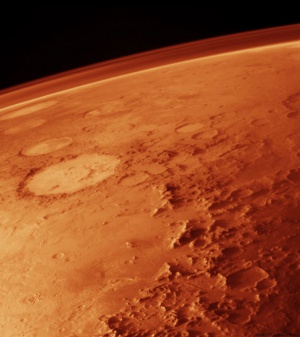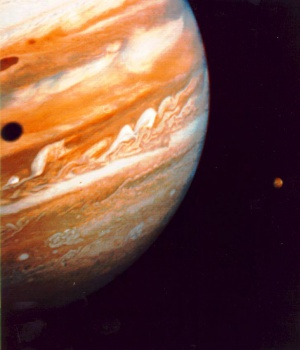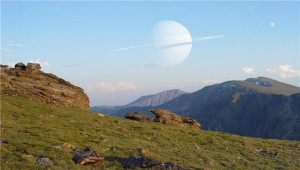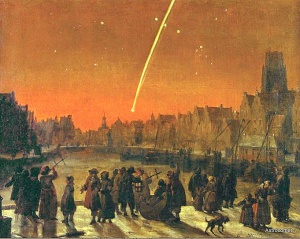Planets
This page is for the Planets and the evolution of life on Planets in the known universe. For Humanoid civilization (usually found on Planets) see Humanoid lifeforms in the known universe. The page encompasses Universes, Galaxies, Stars, Comets, Dimensions, to illustrate the Planets relationship to the rest of the Universe/Creation, including the various forms of Evolution to bring things together in this way.
There are numerous discussions regarding various different planets in the contact reports. As well as specific information about what constitutes a planet, the stages of developmental evolution of life on any given planet. Planets of our past, like Malona, as well as our future.[1] Planet-Planets[2], Planets in other star systems, like the Lesa Star System, Planets in time shifted dimensions, Erra, in past galaxies, Lyren galaxy and of course in our own times galaxy the Milky way (as Earth people have designated it), other present time galaxies such as the Nepon Galaxy and even other universes. Such as our own DERN universes slightly younger twin, the DAL, where planet Akon is said to be located.
List of planets
| Sol star system |
- Sol Star, Solar, Sun The local star, the star that Earth orbits, the active star of the two stars in the binary star system we call the Sol star system, commonly simply called the Sun. Almost perfectly spherical, it consists of hot plasmas interwoven with magnetic fields, it is considered a waning, dying star and only has around 10 million years left before it takes its turn at going Supernova (extremely luminous burst of radiation expelling much of its material). The optical surface of the Sun (the photosphere) is known to have a temperature of approximately 6,000 K. Above it lies the solar corona, rising to a temperature of 1,000,000–2,000,000 K. The high temperature of the corona shows that it is heated by something other than direct heat conduction from the photosphere. It is of utmost importance for the development of life in the system.
| Inner Planets |
- Vulcan/Volkano A big comet, or a small planet, which is not in a position to bear human life because its orbit is the closest to the sun. It played a role in ancient cultures such as Akkadia, Babylon and in Sumer. Limited information was offered in FIGU Bulletin 009. During research a paragraph was discovered in a book called Metamorphoses by Ovid (Publius Ovidius Naso 20 March 43 BC – AD 17/18, was a Roman of renown) which reads "Venus commits adultery with Mars and is caught in a net by her husband Vulcan after Sol has betrayed their affair [Bk XIV:1-74]." Which is interesting when reading what happened to Venus in the contact reports, assuming it does in fact refer to Vulcan and Venus.
- Skill in the 238th contact, 18th May, 1991, Ptaah told Billy that a planet where todays Venus has its orbit, collided with the Destroyer planet/comet hurtling it into the sun. It was 6,100 kilometres in diameter. Skill was the original second planet in the Sol star system and therefore likely developed a more befitting/suitable elliptical orbit than that of the present day Venus nor an anti-clockwise (retrograde) rotation once every 243 Earth days, additionally having its own natural satellite (moon).[3][4]
- Venus in contact 31 is flown past in a beamship when Billy jokes about photographing a Venusian, which spurs a conversation about fraudulent contactees, because no one lives there. Its another desolate and uninhabitable planet.[5] Venus was formatively a planet-planet of Uranus having been torn from its orbit by the Destroyer planet/comet in 6,339.5 BCE.[6]
- Earth also named Terra[7]. In the Sol star system, the planet we think we know well and the planet closest to the star that facilitated the formation of the original 3 habitable worlds of the system.
- Malona also called Malon[8], Phaeton[9], Tiamat and Planet V by modern theorists[10]. Is mentioned by Semjase in contact 4 and yet again in contact 251 where its explained how it was destroyed in the distant past of the Sol star system. Its current existence now constituting smaller and larger pieces forming the asteroid belt.[11][12]

- Mars is now a desolate and uninhabitable planet[13] but it was not always this way. Its explained in contact 251 how "masses of diverse races found refuge on the planets Mars and Malona/Phaeton, where they constructed cities, pyramids, stations and other things (something similar to Earth or something similar in our history, or which can be found on earth if looking at things in their truest sense). They led a good life on Mars until the planet become uninhabitable through cosmic influences. The Destroyer penetrated the Martian orbit and wrenched Mars with it into another SOL orbit, namely that of Malona, where it remained. Subsequently, Malona drifted away, however, because of the Destroyer's powerful forces, but managed to exist in this orbit until the time when it was destroyed by its inhabitants many millennia later, and became the Asteroid Belt. During this "drifting catastrophe", the inhabitants of Malona were decimated from approximately 470 million humans to barely 14 million; however, they were able to recover somewhat and by the time they destroyed their planet, their population had increased again to approximately 52 million.[14]
- Asteroid belt is here between Mars and Jupiter in the current time. Its occupied by numerous irregularly shaped bodies called asteroids or minor planets.[15] But only because Malona was manoeuvred into this position by a horrendously powerful repulsion effect before its final destructive sequence of events.[16] Computer simulations suggest that the original asteroid belt may have contained mass equivalent to the Earth. The current asteroid belt is believed to contain only a small fraction of the mass of the primordial belt. Primarily because of gravitational perturbations, most of the material was ejected from the belt believed to be within about a million years of formation,[17] leaving behind less than 0.1% of the original mass. In 2006 it was announced that a population of comets had been discovered within the asteroid belt beyond the snow line, which may have provided a source of water for Earth's oceans. According to some models, there was insufficient outgassing of water during the Earth's formative period to form the oceans, requiring an external source such as a cometary bombardment.[18][19][20]
| Outer Planets |

- Jupiter is mentioned in Contact report 39, 115, 182, 228, 251, FIGU Bulletin 4, 5, 6, 7, 8, 9 and 11. Jupiter would be considered a sub-system of Planet-Planets[21] by Plejaren standards of designation.
| Jupiters Galilean Planet-Planets[22] Discovered by Galileo Galilei around January 1610. |
| Saturns Planet-Planets[23] Discovered by Christiaan Huygens in 1655. |
- Kathein is discussed in contact 228, contact 223 and FIGU Bulletin 009 as a planet in the Sol star system but which remains hidden from the perspective of earth due to its orbit residing beyond the sun, behind the sun from our perspective. Travelling at a tremendous velocity having been freed from the Destroyer Planet's field of force during its tenth to last passage through our star system. Its uninhabited and will drift out of the Sol star system in the future (may have already occurred in fact).
- UNI/Nibiru/Nubiru (Transpluto comet) is mentioned in FIGU Bulletin 009, FIGU Bulletin 010 and briefly by Quetzal in contact 228. An uncommonly big comet, which has an orbital period around the solar system of around 3,600 years. The comet is not in a position to bear human life. That which emerges from old texts regarding the Annunaki and the planet Niburu is based on mythological facts as well as beliefs, misguidance and erroneous assumptions. Also see Comets.
| Beyond the Oort cloud |
- Dark Star Sols twin star Contact Report 544 around 1 light year from the Sol Star the Sun. It rotates with the Sun to form an invisible centre between the two stars, which in turn move together in space, together moving in these much larger orbits around the galaxy. Ptaahs designation as a Dark Star could mean either the theoretical, compatible with, Newtonian mechanics 'Dark Star' ie a surface escape velocity equal or greater than lightspeed, and a critical radius of r ≤ 2M. Or the Dark Matter related 'Dark Star' with a high concentration of neutralino dark matter within it, generating heat via annihilation reactions between dark-matter particles. The heat prevents such stars (as this 'Dark Star') from collapsing into the relatively compact sizes of more recently created stars and therefore prevent nuclear fusion among the normal matter atoms from being initiated. Or it could simply mean it just does not emit any light.
- The Dark Stars various still undiscovered planets. A star does not require the emission of light to have an arrangement of orbits, as the Dark matter is a separate Force.
| Plejaren Federation |
- Erra is the home-world of Ptaah, Quetzal, Semjase, Sfath and 550,000,000 others. A world of the Plejaren Federation located in the Tayget, Plejara or Plejares star system. Under the leadership of the Andromedan High Council.
- Askal is another inhabited planet of the Tayget, Plejares or Plejara star system. Sudor of Askal from this world has previously contacted Billy according to the Contact Statistics.
- Luseta is another inhabited planet of the Tayget, Plejares or Plejara star system. Nefratisa is a Lusetan from this world contacted Billy on at least 26th June 2001 according to the Contact Statistics.
- Timar is a planet in the Akon star system in the DAL Universe. Asket and Nera are from this world. The Timmar are 'possibly' members of the Plejaren Federation.
- Deron resides in the Wega star system and they are members of the Plejaren Federation.
- Druan a planet in the Nol star system where the Druan are said to live. They are also members of the Plejaren Federation.
- Njsan a planet in the Lyra star system where the Njsan reside and are members of the Plejaren Federation.
- Sater also in the Lyra star system and members of the Plejaren Federation.
- Bardan 1, 2 and 3. The People's Union of Bardan is located in the Coma Galaxy and are recently new members of the Plejaren Federation. One of their ships self-destructed in Russia, Earth on 30th June 1908, which came to later be known as the Tunguska event.[24][25]
- Deneb is a planet in a star system in what we (Earth) have named the constellation Cygnus (northern cross, swan, associated with the tragic story of Phaethon in Greek myth). Denebians resemble a half-human, half-frog (Amphiboid) humanoid form, with fingers twice the length of an Earth humans (with no specific data for epidermal organogenesis).[26] Asina whom Billy has met twice is a Denebian according to the contact report statistics. In Evolutionary terms, humanoid represents a consciousness evolution, though the Amphibia classification combines an additional instinct or intelligence based evolutionary process, while it is not explained whether the Denebian additionally has a spirit-energetic evolution. Which however is moderately answered by being essentially half-human (a human spirit-form). In phylogenetic terms, Amphibia class, taxonomic rank/order Anura, in ancient Greek an-, without + oura means tail, there is no evidence that the Denebian Amphiboid form has had a need for a tail during the evolutionary process. Caudata/Urodela is likely ruled out with the little information we have. Likely omnivorous though nothing is spoken in terms of the process of metamorphosis nor leaving the eggs (gelatinous mass) somewhere as part of the reproductive, fertilisation process. Making this the furthest thesis may go with this limited information, while nothing is yet spoken of specific culture (aspirations or ideals). Leading back finally to the planet Deneb itself, whereby specific environmental conditions could be spoken of. Asina and her colleagues were visiting Earth on a scientific mission, possibly exploration, and had damaged their ship. Billy was able to put them in communication with the Plejaren who helped them repair it. On the second occasion in the year 2000, Asina came to thank Billy for his help 23 years prior. The Denebian have gone on to join the Plejaren Federation.[27]
| Other Worlds |
- Sadr is explained in contact 238 as a world in the Waron star system and birthplace of Nokodemion.
- Desom is in the Asap galaxy and is inhabited by humans at a stage of evolution similar to Earths Middle Ages time period. The star in the system is a giant sun. Desoms moon is four times larger than Earths moon. This moon will rush into the systems giant star in 3200 years time. Billy in the Plejaren Great Spacer visited this planet on 16th September 1975.
- Saban A planet 2.1 million light years distance from Sol where a splinter group from The Bafath had a base of operations until 1982 when they were arrested by Plejaren forces.

- Kartag A planet in the Neb Star System in the Aratom Galaxy. Visited by Billy and the Plejaren on 16th Sept, 1975. The planet is inhabited by humans at a similar stage of development to that of Earth humans. The inhabitants were destroying one another with nuclear weapons. They use aircraft similar to beamships. The system was under the control at the time of the visit by a highly developed form of life, which intervened to prevent an extra-planetary catastrophe. The inhabitants adhered to the advice and were thus saved from total self-annihilation.[28]
- Kados was located in a distant galaxy known as the Negeren Galaxy. Its an average distance from the SOL system of 6.3 billion light years. Though it cannot be seen from Earth because a dark cloud (respectively a dark matter/material cloud) is located at a distance of 5.2 billion light years away from Earth acting as a shield which absorbs the light of the Negeren galaxy. The original Lyrans came from Kados before they went on to settle other planets and galaxies before then finally settling the areas of Lyra and Vega 26 million years ago. Which is then where they finally gained the name 'Original Lyrans'. The star system in which Kados was located was changing into a supernova which eventually engulfed the planet. It was these changes occurring at the time which were the culminating and resulting factors that lead to the migration to these other systems for the original Lyran people. However the planet in the Lyra systems has since also been destroyed, which is why they migrated yet again. These Lyra planets were located beyond the space-time plane that Earth is in at this time, and therefore are not discussed in any more detail since there is no longer relevance for use to us now and in this time.[29]
- Nissan is in the neighbourhood of Lasan in the Lyra star system. The Chinese and Japanese races on Earth emigrated to this star system 2,400,000 years ago. 25,978 years ago they again emigrated from planet Nissan to Earth, consequently making them the youngest immigrants to Earth of today.[30][31] With the exception of the people from The People's Union of Bardan who got mixed up in the events which later became known as the Tunguska event, though these peoples did not intend/plan to stay in the same way that the peoples of Nissan intended.
- Kudra in the Nisan star system. Is where The Chinese and Japanese races of Earth were originally created (Assuming the word 'originally' means the planet in which the first steps of evolution were taken) before they emigrated 2,400,000 years ago to planet Nissan [Above].[32] Though elsewhere it says we all 'originated' in the Ur (most ancient) sense, together (with the exception of the native Earth and SOL human, Neanderthal), along with what is now the Plejaren, having settled various diverse worlds in the interim, in this way having met back up again here on Earth in the current time, having developed slightly different features in this interim which, by way of logic, makes us collectively unsuitable for association with Earths specific environmental conditions for evolution, according to the unchangeable natural laws which can be observed for this specific planet, Earth, including its specific gravitational influence, climatic conditions and air composition.
- Akart is discussed in contact 35 and later in contact 481. It was a planet 5 light years distance from Earth that was inhabited by over 23,000,000,000 humans. They were capable of space travel and visited Earth often to collect fruits, grains and vegetables to set out and grow on their overpopulated planet. Atleast, this was the case until the planet suffered an 'oxygen collapse' or 'atmospheric collapse' as explained in contact 481, whereby the excessively overpopulated, therefore mismanaged, world developed a CO2 concentration which caused a widespread destruction of life. Also see Climate Change on earth for a comparison of culminating factors.
| Comets |

- Destroyer planet/comet last flew past in 1680 making it "The Great Comet of 1680", the first comet discovered by telescope.[33] Its been the cause of many problems in the Sol star system over a long period of time, but has now been removed by the Plejaren (Also see Comets). The wandering Planet, or Comet by definition, has disturbed at least; Venus, Earth, Mars, Malona, Uranus, Neptune, at one time or another. Contact Report 150 states its volume to be 1.72 times that of the Earth though its weight has been reduced to an average mass of that of the Earth. It rotated at a velocity of 314.7 m/s at the equator compared to the Earth's 465 m/s.
FIGU Forum Planet Related Questions Answered by Billy
Animals on other Planets
From the FIGU Forum (Questions Answered by Billy):
Matt - Posted on Monday, December 25, 2006 - 02:17 am
Hello Billy,
1) Can you tell us about the animals found on Erra that are the same as on Earth, and about those that are not?
2) Can you also tell us about the size of the biggest Dinosaur or Animal that the Plejaren know of, that is found on any particular planet out there?
Thank you.
Answer:
1) Yes, he can. There are cows, dogs, cats, camels, etc. etc. which they imported from Earth, and there are thousands of animals unknown to us.
2) No, he cannot.
Arahat Athersata relationship with individual Planets
From the FIGU Forum (Questions Answered by Billy):
Rarena - Posted on Tuesday, July 04, 2006 - 09:13 am
Dear Billy, Thank you for coming back for us...
My question concerns Arahat Athersata. My understanding is that when we reach a certain level of consciousness we integrate with Arahat Athersata and essentially become immortal since we no longer "incarnate" and need to die to continue the "meat" (coarse-matter body) cycle. A good friend mentioned he feels it is his last life on Earth, hence this question.
Are there many people on Earth now, who will evolve to Arahat Athersata within their "lifetime" or do we have to grow and evolve for many more years and develop longer life spans such as the Plejarens?
Answer:
Between our existence here on Earth (or on some other planet) and the existence as a part of the Arahat Athersata level, there will be the existence as a half-material, half-spiritual entity (as it is the case with the High Council). While the existence as a human being with a coarse-matter body lasts about 50 to 80 million years, the next (transition) state lasts for 40 to 60 billion/milliard years.
(Note by CF: Your good friend is quite a distance away from his last life on Earth, meaning before entering the level of AA. In light of the fact that a personality only exists once, he may be correct, though; but I doubt that he meant his statement in this way.)
Planetary positions (radiation, vibrations), influences on our lifelong development
From the FIGU Forum (Questions Answered by Billy):
Smukhuti - Posted March 2011
Dear Billy,
Can you tell us how the positioning of various planets and the sun (stars), during our time of birth and early development, has an effect on the characteristics, inclinations, tendencies we develop. And also how the planetary positions continue to influence, interact with us throughout our lifetime?
Answer:
The radiation (vibrations) of our galaxy's central sun is constantly influenced by the position of the SOL system's planets. Those vibrations may trigger "things" in our consciousness in a neutral way. What is made of those impulses is determined by the individual human being.
An example: If the impulses at the point of birth are favourable (indicating) for becoming a doctor (of medicine), the process towards reaching that goal (and the decision for it) must be gone (made) by the individual person himself. You cannot just sit and wait for the inclinations to become a reality. As everything in life you have to work actively towards it.
In short: The vibrations coming from our galaxy's central sun are neutral possibilities.
Birthdays and planetary cosmic radiation
From the FIGU Forum (Questions Answered by Billy):
Claes - Posted on Tuesday, July 29, 2003 - 06:04 pm
Hello Billy, Thankyou for everything.
It seems to me like you have often had contacts on your birthday. Is there some special reason for this? Are we some how more perceptive or clearer in our consciousness around our birthdate, because of the influence of the planets, stars , cosmic radiation?
Salome, // Claes
ANSWER:
This is a symbolic gesture/action only. A person's birthday has no special meaning or effect or influence, and certainly nothing to do with cosmic radiation. The Plejarans don't celebrate their birthday, with the exception of their 1,000st (but surely not by singing anything like "happy birthday to you ...").
Black holes, their purpose and function in the universe
From the FIGU Forum (Questions Answered by Billy):
Solar - Posted on Wednesday, December 14, 2005 - 12:30 am
Hi Billy .
Could you please explain, what is the purpose and functions of black holes in the universe?
Thank you
Solar
Answer:
They are there for "universal recycling". Black holes are the beginning and end of galaxies, suns, planets, etc. They are an important factor in the cycle of becoming, growing and passing away.
Further Reading
- Planetary Oxygen Collapse
- Climate Change
- Humanoid lifeforms in the known universe
- Hostile Alien Lifeforms
- How did our universe and our world come into existence
- Beamships
- Dimensions
- Time Travel
- Space Travel
- Time Gate
- Space-time configuration
- Fundamental Forces
- Planets
References
- ↑ Contact Report 251
- ↑ Contact_Report_228 lines 98.
- ↑ http://forum.figu.org/us/messages/863/3279.html#
- ↑ Venus
- ↑ http://en.wikipedia.org/wiki/Venus
- ↑ Contact Report 150
- ↑ http://www.futureofmankind.co.uk/Billy_Meier/Contact_Report_117
- ↑ Contact Report 155
- ↑ http://en.wikipedia.org/wiki/Phaeton_(hypothetical_planet)
- ↑ http://en.wikipedia.org/wiki/Planet_V
- ↑ http://en.wikipedia.org/wiki/Asteroid_belt
- ↑ http://en.wikipedia.org/wiki/Planet_V
- ↑ http://en.wikipedia.org/wiki/Mars
- ↑ Contact Report 251
- ↑ http://en.wikipedia.org/wiki/Minor_planet
- ↑ Contact Report 251
- ↑ http://www.gps.caltech.edu/classes/ge133/reading/asteroids.pdf
- ↑ http://www.planetary.org/blog/article/00000551/
- ↑ http://en.wikipedia.org/wiki/Asteroid_belt
- ↑ http://en.wikipedia.org/wiki/Planet_V
- ↑ Contact_Report_228 lines 98.
- ↑ Contact_Report_228 lines 98.
- ↑ Contact_Report_228 lines 98.
- ↑ FIGU Bulletin 59
- ↑ The Asket Contact Reports
- ↑ Christian Frehner, UFO Conference 2006, Laughlin, Nevada
- ↑ Christian Frehner, UFO Conference 2006, Laughlin, Nevada
- ↑ UFO...Contact From The Pleiades
- ↑ http://www.futureofmankind.co.uk/Billy_Meier/Contact_Report_248
- ↑ Contact Report 236
- ↑ Attacking questions from Japan... (FIGU booklet)
- ↑ Contact Report 236
- ↑ http://en.wikipedia.org/wiki/C/1680_V1